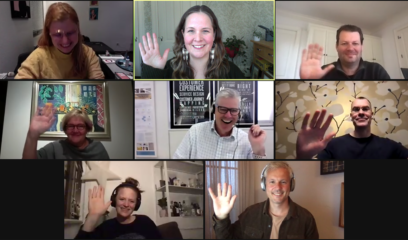For decades, designers have lamented that the business world didn’t understand or respect design. We howled didn’t have “a seat at the table.” We wondered when—or if—the tide would turn.
We needn’t wonder any longer. Business-focused media outlets like Business Week, Forbes, Harvard Business Review, and even The Wall Street Journal regularly publish articles about design thinking. IBM has built the largest internal design team on the planet. And, of course, we’ve seen tech giants, management consulting firms, and even financial services companies gobbling up UX and service design firms.
Now, in the wake of businesses catching on to the power of design, we’ve moved on to lamenting the resulting—and inevitable—shift in the design industry landscape. Over the past several years, designers and reporters have produced panic-stricken headlines like “The Rapidly Disappearing Business of Design,” “The Timely Death of the Imperious Global Design Agency,” and “Silicon Valley Killed the Design Agency.”
But thinking that we’ve seen the last of service design agencies is like thinking that we’d seen the last of startups when the first dot-com market collapsed in 2001. Service design agencies are here to stay. Here’s why:
Money isn’t everything. It’s true that in certain markets (like Silicon Valley), service design agencies have a tough time competing for talent. Tech companies like Facebook and Google can pay salaries that are multiples of what a services-based company can afford—and that’s before you throw in stock options and perks like free meals and gym memberships. For many job candidates, that kind of money is tough to turn down. But believe it or not, there are service designers that simply don’t want to work for Google or Facebook because—gasp!—they don’t find those services particularly interesting. Others just prefer to work for smaller organizations.
Not everyone wants to sell. Don’t think for a minute that today’s independent service design agencies are still independent because they haven’t had a line of suitors a mile long. Rather, they’ve stayed independent because they want to have control of the type of work they do, the way they operate, the way they spend money, and the physical and cultural environment in which they work.
Acquisitions don’t trap employees. Here’s a dirty little secret of Silicon Valley: Many seemingly high profile acquisitions have very little financial upside for employees of the company being acquired. Tech Giant Corp, for example, might purchase Famous Little Startup because the startup is (secretly) about to go broke and the Valley’s high profile investors want to help each other save face—so Tech Giant Corp absorbs the startup’s employees without any equity payout and quietly kills the product or service they’ve been working on for years. Service design agency acquisitions can happen in a similar way—rewarding a few top agency leaders while leaving the bulk of employees hanging high and dry. Over the past few years, several newly acquired agency employees have told me that they have no significant financial motivation to stay and work for their new employers. So what’s stopping these employees from leaving and then joining or starting another independent agency? Not much at all.
Cross-industry pollination drives service innovation. Many designers love working in agencies because they just don’t want to work in one industry or on one type of problem for years on end. But such project variety benefits clients as well as agency employees. Sure, there are still some clients that say, “Oh, you don’t have previous experience designing motorcycles for dogs? Then I don’t think you can help us.” But as companies catch on to value of design, more and more have started to realize that ideas and emerging practices from other industries can actually help them leapfrog their competitors. Outside agencies are naturally positioned to provide this cross-industry viewpoint.
Outsiders seem smarter. The design industry alarmists argue that growing internal design teams will obviate the need (and budgets) for external agencies. I disagree. The field of consulting was born because companies either couldn’t perform a certain task in-house or didn’t trust that their employees could do the best work. Today, the perception that outside consultants have better/smarter/cooler ideas still holds strong at organizations around the globe—and these companies will continue to turn to outside agencies for some percentage of their overall design work.
There will always be laggards. The list of companies taking leadership positions by tapping into the power of design is growing, but it’s still minuscule compared to the number of companies that exist in the world. In the decades to come, we’ll see additional waves of companies waking up and seeking to hire, acquire, or outsource service design. This will create abundant work for in-house designers and agencies alike.
My Take: We Need To Design The Service Design Firm of The Future
It’s naïve to assume that design agencies can only be on the receiving end of acquisitions. Just as tech companies, management consultancies, and big brands have begun to rethink their business strategies within the context of design, service design firms that want to remain essential to clients must rethink their offerings. For example, the brand strategy and design agency Prophet recently acquired analyst firm Altimeter Research, founded by my former Forrester colleague Charlene Li, in order to better help senior executives “understand and act on digital as a transformative force in their business.” Service design agencies need to follow suit. Let’s turn our collective talents on ourselves and design a service design agency platform that will remain viable—and profitable—for decades to come.
So get ready for change, not extinction.
***
This post originally appeared in my regular column in Touchpoint Journal, published by the Service Design Network.




